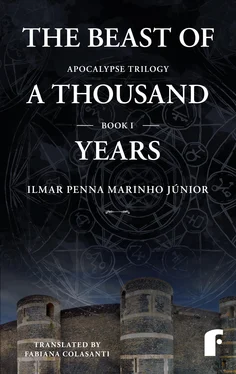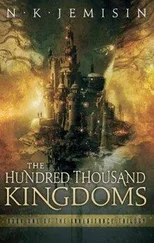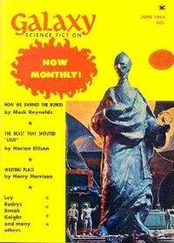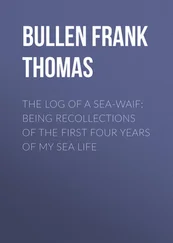When the conference was over, an avalanche of questions ensued, some of them misplaced, like the first one, from a young woman, that caused the audience to burst into laughter.
“I would like to know, Mr. Curator, if the ruler Blanche reviewed the troops like Queen Catherine used to do?”
This was the curator’s answer to the trick question:
“Mademoiselle, since the walls of the castle were thick, deaf and blind to their owners’ affections, there are no records of what the ruler Blanche, widow of Louis VIII, deceased in 1226, did with her spare time after reviewing her guard of honor. Oddly enough, your question makes me remember the famous episode, told by the minstrel of Reims, in which an extravagant gesture of this queen was able to silence the slanders of the Bishop of Beauvais and other vassals. The ruler went to the Parliament, where she had a stand. She went in, wearing a long coat, demanded silence and attention, climbed on a table in the center of the room, and yelled to the bishop: ‘Look closely and see if I’m pregnant’, while she dropped the coat to her feet. She spun around, naked, in all directions under the captivated stares of the audience, all to prove that the accusation that she was expecting another child was false. They all rushed to her with respect and admiration, covered her with her coat, and led her to the royal chambers. To this day, no one knows whether they acted this way out of devotion to her beauty or her courage.”
“Could you explain the reason for the sale?” asked a lady in the back of the auditorium.
“Father Antoine Duvert, who knows well this nefarious period of the tapestry, will answer you.”
“Well, after the donation in 1474, the tapestry was on display in the cathedral’s nave on Saint Maurice Day, Christmas, Easter, and Pentecost Sunday. As much as they considered it ‘absolutely magnificent’, the priests complained about the hard work of lifting it from the vault and the expenses to keep it intact. They also complained that it drowned out the songs and made the sermons inaudible. They decided to put it up for sale in 1783, right before the Revolution. No one wanted to buy it! But the worse was yet to come. Since its conservation had become a nuisance, it was cut up and began to have the most unexpected uses. It served as protection in greenhouses, curtains, saddle hides, and even doormats. It was an insult what they did to this great work of sacred art.”
“Could you tell us when the restoration works began?” asked a young lady, moved by the description.
“It was Canon Louis-François Joubert, named guardian of the cathedral, who had the brilliant idea of creating a workshop to restore the tapestry. The work began on February 1st, 1849, and continues to this day. They have recovered the six pieces which contain fourteen tableaus each, plus the scenes with the ‘great characters’. Altogether, it is 338 feet long and 14.8 feet high. It’s impossible not to be impressed with the four huge restored images in the middle of the canopy supported by columns, in which we are invited to contemplate and ponder about the biblical scenes.”
The panelists were subjected to several questions about the missing scenes.
“Well, gentlemen”, the curator explained, “I have a lot of hope that we will recover some of the missing tableaus. It’s a dream I nurture with religious faith. I count on the help of the students of the Lycée Saint-Serge; we’ve launched an international warning through the internet to all the art centers, historians, museum directors, antique dealers, and religious art researchers, as well as to the famous auction houses, trying to locate the oeuvre. This excellent work has been coordinated by our dear Father Antoine Duvert, from the Abbey and the Lycée Saint-Serge. He has helped me correct misconceptions and dismantle fraudulent tips that always come up when it comes to works of art.”
“It’s true, I’m a great fan of virtual communication”, Father Antoine confirmed, still fidgeting on the uncomfortable chair, after being praised by the curator. “I’ve been developing a tracking system with a group of young students who work with computer science at the lycée. The boys have been helping me a lot with the researches all around the world.”
“Have you had any results?” asked a bearded young man who looked like a college student, had a tattoo on his neck, and was seated on the second row.
“Unfortunately, nothing significant until now. There are rumors that one scene of the tapestry might be in Poland,” remarked the curator. “The information is being analyzed. Where there’s any evidence, I will use all the means at my disposal to recover at least one of the lost tableaus. I won’t give up.”
Having no further questions to answer, after running his hand through his frontal bald spot, the curator concluded the lecture:
“My friends, you’re all invited to visit Château D’Angers, one of the most important museums of France’s great historic heritage. Visit the Museum of Weapons and the tapestry that reveals the Apocalypse, which brings hopes of a world without poverty and violence when New Jerusalem descends from Heaven. Marvel at the beauty of the biggest tapestry in the world before the gallery’s renovation work to install the new lighting, scheduled for the beginning of the summer, starts.”
Very pleased with the ovation they had grown used to share, the two old friends left, smiling, the remodeled building at Michel Debré Square, a few yards from city hall. They saw all the lights on the white façade of the Palais des Arts on, just like the mayor had demanded it to be during the 21st Journalism Festival. He wanted the greatest socio-cultural event of that municipal election year to be intensely lit by the lights of knowledge to a French audience always eager to learn the greatness of their history.
“What most impresses me in this festival is how these people want to breathe culture”, praised Father Antoine, smiling. “This is great.”
“Soon they’ll be rewarded. The gallery is getting beautiful! I’ve decided to put the tableaus closer together and get rid of the huge empty spaces between them. There won’t be the negative impact caused by the missing scenes anymore. I left only one empty space, so the dream can go on.”
“Where did you leave it?” Father Antoine asked, curious.
“You’ll see, my friend, when we make the final inspection for the reopening of the gallery together”, teased curator Ferdinand, smiling and offering his hand to say goodbye.
“I’ll wait. I’ll find out everything you’ve been hiding from me”, said the priest, as if, behind the curator’s wry smile, he suspected something evil the mysterious gap on the wall wanted to hide.
Suddenly, Father Antoine Duvert fell silent, and his face got serious, distressed, like someone about to pray. He recognized the castle curator’s ambition to recover at least one of the seven lost tableaus of the Divine Revelation sequence as legitimate and healthy; in particular, the recovery, at any cost, of the unknown scene of the Caged devil for a thousand years. Actually, he feared that this missing tableau meant that the seven-headed dragon was free and responsible for the current mayhem of the world. Wherever it was, it would be spreading discord, AIDS, encouraging abortion and human cloning, pedophilia, inciting violence, greed, and corruption. It all suggested that men had lost the battle between good and evil. This was the terrifying vision his mind had, hovering under the huge round towers of Château D’Angers. More than ever, he believed it was crucial, from the religious or cultural point of view, to find this missing tableau of the Apocalypse Tapestry, whose images illustrated the visions St. John received from Jesus Christ through an angel.
Читать дальше












